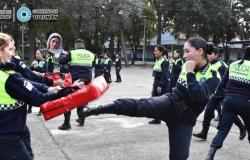If the Chamber of Deputies, as expected, ratifies the profit scheme that it had already approved, according to a work by the Argentine Institute of Fiscal Analysis (Iaraf), the provinces of Córdoba, Buenos Aires and Santa Fe would be the most favored, In total, they would receive an extra collection of $688,741 million. First is the district governed by Axel Kicillof, which would keep $378,596 million, second is the jurisdiction of Maximiliano Pullaro, $157,063 million, and third, that of Martín Llaryora, with $153,082 million.
The Senate eliminated the chapters on Personal Assets and the restitution of the Income Tax, which were central points of the program promoted by Rosada, so now Deputies must insist on the original sanction of the project with the same majority with which these were rejected. two chapters. In the case of Profits, the original proposal is to restore the tax for salaries greater than 1.8 million pesos for single people and 2.2 million for married people, and it was a special request from the governors of Together for Change. For now, the non-taxable minimum will continue to be set at 15 Minimum, Living and Mobile Wages.
On average, the additional annual transfer would be $67,500. The provinces of Santiago del Estero and San Juan would have an extra annual income from co-participation of $67,000 and $71,000, respectively. Buenos Aires, Santa Fe and Córdoba would earn between 4 and 14 times more, depending on the case, than the less favored provinces of Tierra del Fuego, Santa Cruz and Chubut, whose earnings would not exceed $34,000 million respectively. The extra resources that the City of Buenos Aires would receive from the return of the Income Tax for the fourth category are between 3 and 9 times less than those of the three winners.
In the case of provinces such as Catamarca and Formosa, the report indicates, the earnings reform is clearly favorable. If the case of Catamarca is taken, the provincial government will receive an annual amount per inhabitant of $110,000, a figure that results from the combination of an extra income of $47.5 billion and a population of 429,500 inhabitants. This amount of money is much greater than the contribution that Catamarca residents who will have to pay a higher income tax as of the reform will make.
The southern provinces are the ones that would receive the least extra resources. In this way, the analysis of the numbers coincides with political frictions. During the negotiation and meetings of the Government with governors and representatives of the provinces, the Patagonians offered greater resistance to the issue of Profits. They asked for a higher non-taxable minimum given the higher income structure of their population. The opposite was true of the governors of the north, who demanded lower floors so that more people paid this tribute.
The distribution of resources is not capricious, it obeys the law of Federal Co-participation of Fiscal Resources, which obliges the Executive to distribute 54.66% of what is collected through the Income Tax between the provinces and establishes what portion corresponds to it. to each one. In that sense, the analysis by the consulting firm led by Nadín Argañaraz indicates that of the extra $3.1 billion that could be collected, $1.7 billion would be distributed among the 24 jurisdictions.
For the Nation, this possible 0.2% of GDP of extra annual revenue is equivalent to 5% of the total fiscal effort required to eliminate an annual fiscal deficit of the order of 4.4% of GDP. In December, the forecast positive impact on collection for this reason was double, that is, 0.4% of GDP.
For Argañaraz, “the amount per inhabitant is the most appropriate for measuring the impact.” In that sense, smaller jurisdictions have an advantage since Tierra del Fuego, Catamarca and Formosa would lead this podium. Once again, the geographical trend of greater benefits for those in the north than for those in the south is observed.
In this way, if the extra resources were divided by the number of inhabitants, the “profits” per capita for Tierra del Fuego would amount to $114,582. In the case of Catamarca, $110,544, and in Formosa, $103,323. In parallel, the least favored in this analysis of extra per capita resources are the City ($13,623), the province of Buenos Aires ($21,604) and Mendoza ($35,180).





